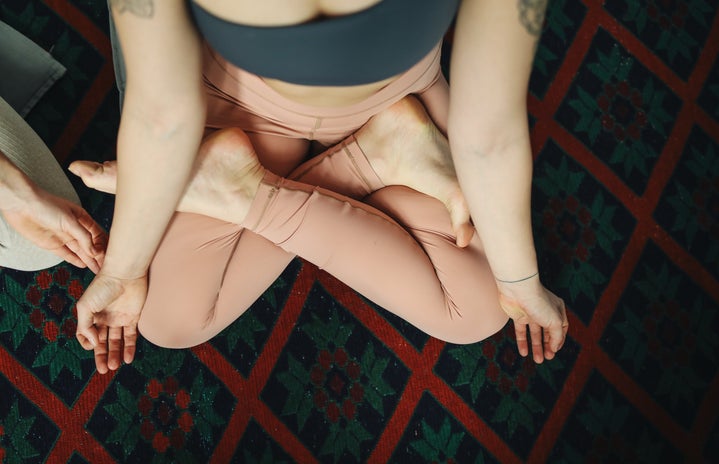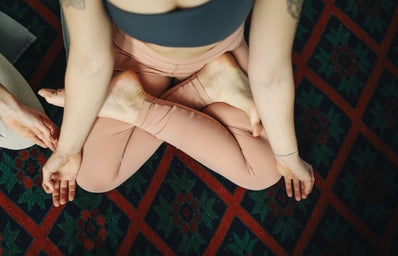“Meditation has changed my life,” is a phrase constantly seen in healthcare articles and wellness videos everywhere. In recent years, meditation has turned into a full-on trend that isn’t just for hippies to sit cross-legged on the floor. There is no need for instrumental music, nature sounds or incense burning unless you enjoy them. The stereotypes have been ditched, anyone can meditate. Naturally in the wake of this trend, I was left asking myself, “if meditation can change other people’s lives, then why wouldn’t it be able to change mine?” I tried practicing mindfulness meditation for my first time three years ago. Since then, I’ve meditated for 187 hours and 5 minutes, across 831 days, according to the app I use.
So, if all those other people can do it and I can do it, then as cheesy as it sounds, you can too. Getting started is the hardest part, as is with most tasks. Luckily, you don’t need to go anywhere or buy anything new. You don’t need to live a specific lifestyle or be religious, all you need to do is show up for yourself. While practicing mindfulness is often recommended for people struggling with their mental health and even chronic pain, it has something to offer for everyone. The practice promotes awareness of the present moment through breathing techniques and calming of the body and mind Here are five tips to help you get started on your mindfulness meditation journey.
- Use resources for guidance
-
It was a health care professional that first recommended I try mindfulness and they suggested using an app for some guidance. Guided meditation is a big part of the current trend with apps such as Headspace and my personal favorite app, Calm. These are beginner-friendly apps that will take you day-by-day in your practice. They provide a place to start and support you along the way. I like the Calm app as it has a lot of resources aside from meditation to promote mindfulness and wellbeing through sleep stories, body stretches and breathing exercises. While these apps do require paid memberships for full access, I also enjoy the Insight Timer app, which provides thousands of free guided meditations. An alternative to these apps is mindfulness books that teach you about meditation techniques and provide different practices to try out yourself but with less guidance. A popular book, The Little Book of Mindfulness by Patrizia Collard is even small enough to fit in your pocket!
- Tailor it to your own needs
-
There is no right way to meditate or “one size fits all.” You don’t have to sit still on the ground the whole time with your eyes closed if you don’t want to. Generally, sitting is recommended as it keeps you in an alert position that’s still comfortable. When trying meditation for the first time, sitting in a chair with a cushion for comfort tends to be the most effective for body alignment. As someone that struggles with chronic pain, I prefer to lie down during my practice. The most important thing is that you feel comfortable physically while still being able to focus on your mindfulness practice.
- Create a routine
-
Consistency when developing any new habit is key, creating a routine for your meditation will be the best way to incorporate mindfulness into your everyday life. Any time of day that works for you is a good time for practice. Some people prefer the morning to start their day with a clear mind, others mid-day as a break or even in the evening to unwind from the day’s activities. I started with meditation before bed to help with my insomnia at the time and have continued with this schedule as a way to reflect on the day and feel more relaxed to sleep. What is most important with this routine is making sure you choose a time of day that works for every day, as you would when developing any new habit. Along with your routinely timed meditation, you have the freedom to practice mindfulness at any time of day. As important as consistency is, mindfulness is something you can turn to at any time.
- Trial and error
-
Mindfulness meditation is a personal experience and it might not work for you the first time. There are so many different ways to meditate and different techniques to explore and try out. The first type of mindfulness that I tried and truly enjoyed was progressive relaxation or body scan, which allows you to work through your body, part by part, to notice and progressively release any tension or sensations. Some types of guided meditation didn’t work for me, while others have become my go-to’s. Every time you practice mindfulness will be different and may last a different amount of time. Most days I meditate for 10 minutes, others for 30 minutes. There is no minimum time or maximum, just like there is no right from wrong. It is up to you how you want to meditate and for you to explore what works.
- Be patient
-
Be patient with yourself and be patient with your practice. There may be no immediate sense of change within your life, you might not feel less stressed or any different at all. There is no timeline or finish line to cross, take it one day at a time. When I started meditating, I was constantly getting frustrated with myself for losing focus and getting distracted by my overthinking mind. It can be hard not to lose your motivation when you cannot see any gain from your practice. But as mindfulness teaches us, being patient includes being aware of those frustrations as valid feelings. What’s important is not giving up, and being patient with yourself as you try something new. I haven’t meditated every day for the past three years, I have taken breaks when I felt that my practice wasn’t benefiting me. Whenever I was ready, meditation was there for me to try again when I wanted. It doesn’t go anywhere and meditation is something you can always return to.
Use these five tips as the first steps to starting your mindfulness meditation journey. There is absolutely nothing to lose by starting meditation, but there is so much to gain. It’s time to reclaim your emotions and learn to spend more time with yourself. Mindfulness promotes gratitude, forgiveness, focus, confidence, rest, self-esteem, happiness and so many positive elements we can all use a bit more of in our lives. It isn’t just the meditation that changes your life, it’s you that changes your own life



